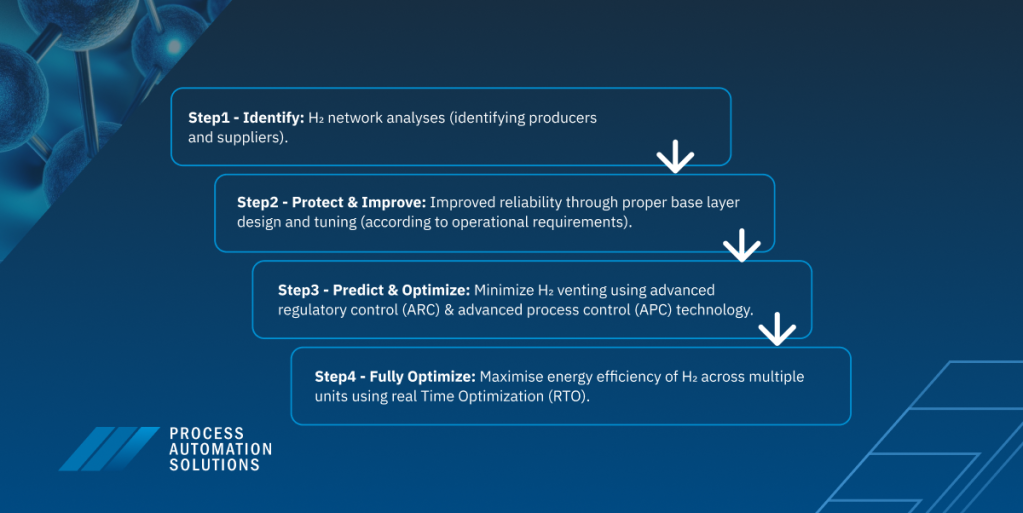Hydrogen: Reduce Emissions and Maximize Energy Efficiency
Hydrogen (H2) is one of the key components used in refineries and various process units such hydrocrackers, hydrotreaters, desulphurisation units and aromatic plants. Since these processes are dynamic, the plant demand for H2 varies continuously. Excess H2 is generally let down to the fuel gas system or sent to a flare. This results in product losses, increased emissions and reduction in energy efficiency. With more and more plants introducing green H2 tie-in technology, the proper H2 header pressure control and optimisation is becoming more appealing and important.
The good news? H2 venting can be reduced. Better yet, there are some instances where it can be reduced close to zero.
Do you want to know how? Let’s discuss further.
Hydrogen Header Pressure Control
Often, the header pressure control is partially controlled by operators by continuously adjusting the feed flow of H2 suppliers and consumers. However, since the demand is dynamic, an operator needs to continuously monitor the demand and supply and make changes accordingly. It is impossible to control it manually and ensure that there is no H2 loss while maintaining optimal energy efficiency.
Here are steps to improve H2 header pressure control where each step adds a layer for improved value addition and enables the next step for even more value addition.
The way each step unlocks value towards the full potential is described to the right.

First Step to Unlock Value – > Advanced Regulatory Control (ARC) and Tuning
The most common solution to control the H2 header pressure is to have a PID controller which monitors the header pressure as a master controller and writes to the feed flow of H2 production units or consumers. It is critical that the baselayer PID controllers are properly tuned and the H2 network properly designed.
The main goal of a properly configured baselayer is to protect & improve pressure headers during factory disturbances and cutbacks. Already unlocking value with limited investment.
Second Step to Unlock Value: Advanced Process Control (APC)
Properly tuned PID controllers and baselayer design will result in better control than an operator controlling the header pressure but do not have any predictive capability. Unlocking the power of prediction in the baselayer might be a challenge due to the presence of time delays and the high number of producers and consumers on the H2 network. With constant changes in supply and demand within the H2 network, a control scheme needs to work proactively based on future predictions and process dynamics to stabilize the system. For these scenarios APC technology provides a great solution.
The main goal of the APC layer is to predict & optimize and thereby pro-actively respond to disturbances to stabilize the network further unlocking value.
Sitewide Real Time Optimization (RTO)
Although ARC and APC schemes include optimization, this is linear and local. The use of an RTO expands the scope to a sitewide-wide scale. The RTO is used to globally optimize the energy efficiency of the factory from an H2 perspective. The RTO can incorporate various assets in the factory including electrolysers which use green energy such as wind and solar. Additionally, an RTO is well suited to handle any nonlinearities that are present in the system which are difficult for traditional ARC and APC schemes to accommodate.
The main goal of the RTO layer is to fully optimize the H2 grid by continuously pushing the available handles towards the active nonlinear constraints. Fully unlocking economic maximization and global optimization.

What Next?
The first step is to contact an expert to identify the specific needs and goals of your H2 network to further develop the various layers to unlock the full potential of your H2 network.





